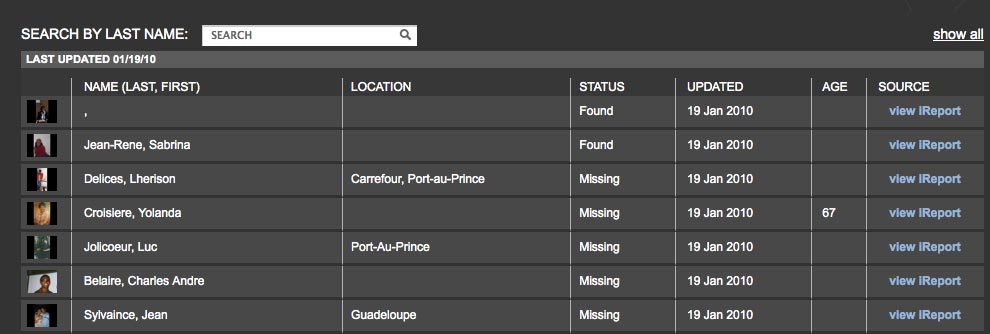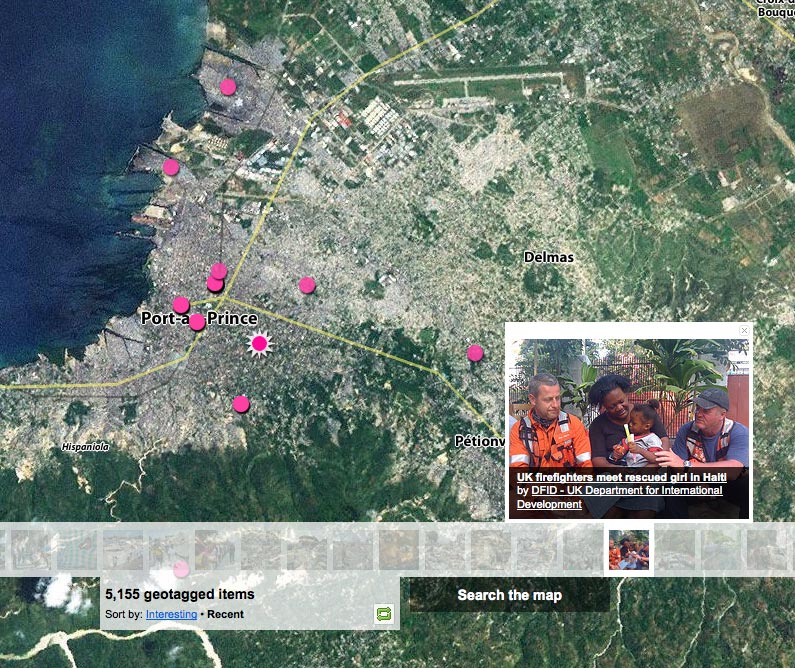A week on since a devastating earthquake struck Haiti, how are news websites covering the story? What tools are being used and how are media organisations helping those affected with information on top of news for a wider audience?
Here’s a selection of sites that have made the most of multimedia tools to break and roll reports of the crisis. Please add your own examples in the comment space below or email Journalism.co.uk.
Breaking news of the quake
Journalism student Emily Purser was interning at Sky News when the earthquake happened:
Unsurprisingly, the earthquake took out all the landline and mobile phone lines in Haiti immediately. This obviously disabled the country spectacularly – as well as the pressing issue of not being able to speak to each other, it meant that Haitians were not able to speak to the rest of the world. As a result, the classic ways of gathering information for a rolling news channel – call everyone we know and find out what’s happening – were redundant. We had a map, and that was it.
Twitter, Google Chat, Skype and Facebook were used to contact sources and conduct interviews; while YouTube and searches of TwitPic provided on-the-ground footage. These tools were being picked up by the entire newsroom, Purser tells us, not just the online team. What’s more the geography of the newsroom (the online desk is right next to the studio floor, for example) helped grow the story across platforms, she adds.
Beet.tv has this video interview with Reuters’ global editor of politics and world affairs Sean Macguire, who explains how the news agency builds up a network of local stringers to prepare for crisis coverage.
Macguire describes how some of the first video footage of the disaster was sent back to London by a Reuters’ videographer thanks to a “friendly embassy” in Port au Prince with an internet connection.
Helping to find the missing
Online news coverage and multimedia from Haiti has been used to locate missing persons by relatives. CNN in particular is using its citizen journalism site iReport to help connect people with family, friends and loved ones in Haiti.
An ‘assignment’ on the iReport site asks users to submit photos of missing people, including their last name, first name, age, city and any other significant details. So far, 6,753 iReports have been sent in for this assignment.
With CNN’s main site, a database of all the reports submitted by users has been created, which can be searched by name and is updated with information about those missing relatives and friends featured in the iReports.
“We are also in the process of integrating incoming e-mails, phone calls to CNN and tweets to the #haitimissing hashtag,” a CNN spokesman said – helping individuals conduct a wider search for information about missing loved ones.
“Since the earthquake hit, the Impact Your World page has had an increase of 7,545 per cent in page views over the previous week. The site lists opportunities to donate via phone, text and website, with special sections devoted to texting and international currencies.”
And there have been some good news stories as a result – survivor Karen Jean-Gilles didn’t know if her in-laws had survived the quake until she saw the photo of Joachin “Clark” Jean-Gilles and his wife Marie on the front of the CNN.com homepage.
Social media coverage and real-time tools
Digiphile blog has a great round-up of this, but Twitter lists have been used extensively by news organisations to group together twitters and correspondents on-the-ground in Haiti.
National Public Radio (NPR) built an extensive list of sources located by recommendation, referral and through a series of geolocated searches. This fed into an initial breaking news story, which was updated throughout the day on 13 January, and has informed the site’s topic page on the crisis.
The Associated Press (AP) is continuing to build its social networking presence by offering behind-the-scenes updates via Facebook.
Elsewhere the New York Times is bolstering its main news channel coverage of Haiti by using its The Lede blog to provide rolling coverage. The blog is updating with links to reports from other news sources as well as the Times’ own coverage and has posts filed under different days stretching back to when the earthquake occurred. The aggregation of multimedia reports on the disaster available on the site’s homepage has been replicated through a Facebook page posting updates on the situation in Haiti.
The Times’ homepage currently features this rolling picture gallery, but the Lede also links to this Flickr map of geotagged photos from the area that have been uploaded online.
The site has also set up an online photo gallery to post pictures of missing persons in Haiti submitted by friends, relatives and colleagues. In addition to the Lede’s posting of comments from survivors and those trying to reach loved ones, this is both a valuable service and a source of news leads.
In Haiti
And then compare the online coverage with the media on the ground in Haiti.
This report from the Washington Post on Haitian radio station Signal 90.5fm, which has reportedly stayed on air without pause since the quake struck, provides a stark contrast to the multimedia news coverage elsewhere.
(It also reminded me of an interview with independent Zimbabwe radio station SWRA, whose founder Gerry Jackson extolled the virtues of traditional, radio-based communication and media in such situations.
Writes the Post’s William Booth:
In a city without electricity, with no functioning newspapers, no TV signals, no telephone lines, and cellular service so spotty that it is hardly service at all, radio stations in Haiti have become the lifeline of news about the living and dead.
(…) The station operates on two diesel generators and owner Mario Vian’s promise not to stop.

